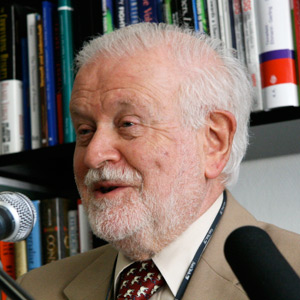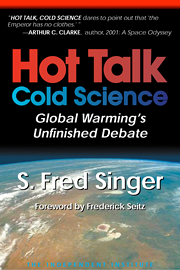World leaders met at the United Nations in New York last week for the fifth anniversary of the Rio Earth summit, which led to the Global Climate Treaty. Judging from their speeches they seemed intent to demonstrate a willingness to cripple their economies by drastically cutting the use of energy. It reminds one of a giant “potlatch,” a ceremony in which Indian chiefs try to outdo each other by destroying their most treasured possessions.
While the United States has not yet announced numerical targets, the European proposals call for cutting carbon dioxide emissions by 15 percent—from 1990 levels—by the year 2010, with even more cuts thereafter. All these sacrifices are supposed to save the world from a global warming catastrophe that exists only in non-validated computers models and in the vivid imagination of environmental zealots.
At the United Nations, President Clinton gravely stated that “the science is clear and compelling,” echoing earlier State Department pronouncements that climate science is “settled.” Yet, despite 50 percent increase in atmospheric green house gases in the last 150 years, the climate refuses to show the warming trend predicted by theoretical computer models. The only truly global data, available since 1979 from weather satellites circling the Earth, actually show a slight cooling trend. But you wouldn’t know this if you read the
Summary of the UN science report, published by the Intergovernmental Panel on Climate Change (IPCC); it conveniently ignores the existence of satellites.
A New York Times editorial (“No Hot Air on Global Warming,” June 22) claims "far broader scientific consensus on global warming than there was in Rio five years ago." This is simply not so. In 1992, the IPCC claimed that observations and computer-model predictions of warming were “broadly consistent.” The 1996 report no longer makes this claim. Instead, we find the artful but meaningless phrase that “the balance of evidence suggests a discernible human influence on global climate.” According to a story in the weekly Science (may 16), even many IPCC scientist no longer accept this claim. Some hundred independent scientists had already expressed their skepticism by signaling the “Leipzig Declaration,” following a November 1995 conference in that city.
Here is a point-by-point reply to the New York Times editorial:
(1) Global temperatures rose before 1940, as the Earth recovered from the “Little Ice Age,” of the last two centuries. But the chairman of the IPCC, Professor Bert Bolin, and most scientists now agree that this temperature rise was of natural origin. Since 1940 there has been no discernible trend—in sharp contrast to computer model calculations.
(2) The IPCC does not consist of 2,500 scientist. Although its Science Report lists several hundred names as (nominal) contributors and reviewers, it doesn’t show whether they agree with the Summary and its conclusions. The Summary is a political document put together by a handful of scientists who inevitably reflect the official positions of their governments.
(3) Nowhere does the IPCC Summary for Policymakers actually claim temperatures would rise between 1.8 and 6.3 degrees Fahrenheit over the next century. These are simply the results of assumed scenarios and assumed climate responses from model calculations. The report itself specifically disclaims that studies of climate patterns can “quantify the magnitude” of a greenhouse gas effect on climate.
(4) When it comes to the consequences of a putative warming, the editorials is again out of line with the science. Ocean warming leads to more evaporation and subsequent precipitation and ice accumulation in the polar regions that cause a drop in seal level—not a rise. A global warming should decrease weather extremes—and not increase them. Rather than global damage to forests and crops lands, we have seen an improvement in tree growth and agricultural crops—probably because of more carbon dioxide in the atmosphere.
(5) With no detectable warming and with likely net benefits if there is a warning, what’s left? A possible climate “surprise” that cannot be predicted but that requires action--any kind of action—because of the “precautionary principle”? Indeed, the Climate Treaty calls for achieving a concentration of greenhouse gases that avoids “dangerous interference” with the climate system. The trouble is that no one has a clue as to what level of carbon dioxide is dangerous—or non-dangerous. Climate has shown large and abrupt fluctuations over the last several thousand years, without irreversible catastrophes. Higher concentrations of carbon dioxide may well be beneficial. We simply don’t know.
As the editorial suggests, there are indeed scientist who take the climate warming issue seriously, most of them involved in the $2 billion-a-year research on global change. Scientists who do not have a vested interest in federal grant money can afford to be more impartial and are often skeptical. We are doing our best to transmit this skepticism to those who will pay the bill for the extreme policies that are being imposed to solve a largely nonexistent problem: the consumers who will pay higher energy prices, the taxpayers who pay for the burgeoning bureaucracies, and the workers who will be out of jobs when industry moves its production to countries that are not required to cut their energy use.
The New York Times editorial correctly notes that “a carbon tax is unlikely to fly in Congress,” and opts instead for “an international emissions trading scheme that would set a global ceiling on emissions and give each country a national ceiling.” Rich nations that cannot keep within their limits would then “buy” pollution permits form poor countries. The editorialist apparently doesn’t realize—or care—that this is an energy tax in disguise, in which these revenues would not flow to the U.S. Treasury but to other nations. Maybe this is the kind of permanent global entitlement scheme that State Department planners have had in mind right along. If so, they may find the U.S. Senate peculiarly resistant to such a proposal.
Senate Resolution 98 expresses the sense of the Senate regarding the United States becoming a signatory to a Climate Treaty protocol that could cause serious harm to the U.S. economy. With more than 60 senators already aboard from both sides of the aisle, it is only a short step to a vote that could force the Climate Treaty altogether.









